
‘Welcome to My Eichler’ Film Goes Live
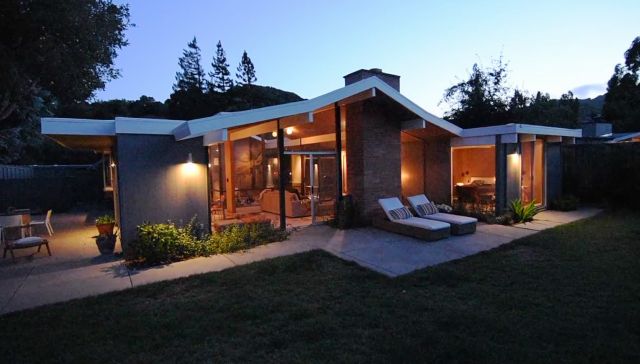 |
|
|
Any fan of Eichler homes will surely enjoy Joe Eichler’s latest appearance on the silver screen.
‘Welcome to My Eichler Home,’ a Dutch production that has been watchable on the Internet in a shorter edition for some months, is now showing in its full, 40-minute version. It can be seen on Vimeo, and, on a larger screen and undoubtedly in lively company, during two presentations in Marin County, on September 28 and October 1. Shows start at 7 p.m.
The free screenings are at the Lucas Valley Clubhouse, 1201 Idylberry Road, and will almost certainly be sold out as tickets were offered first to residents of the Lucas Valley Eichler tract, where much of the film was shot. If you want to attend, try your luck online. Tickets must be secured ahead of time, so don't just show up.
The screenings will be introduced by resident Frank LaHorgue, who has been the neighborhood liaison to the Dutch filmmaker. LaHorgue is a former Eichler Homes manager. Resident Laura Holmes Haddad will serve as MC.
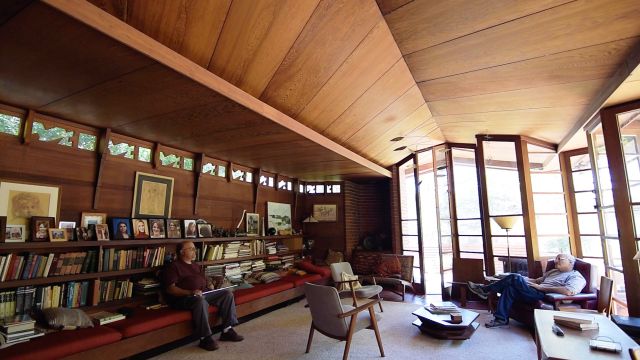 |
|
|
“Following the film, a panel of residents will field questions from the audience," the homeowners association that is sponsoring the event writes. "Panelists will include Van and Carol Athanasakos, original owners; Mark Neely, Chair of the LVHA Architectural Review Committee; Ron Marinoff, Fire Commissioner and original owner; and Brian Brydges, who has done extensive renovation to his first Eichler in the neighborhood.”
The film had its genesis when Edwin Oostmeijer, an innovative Dutch developer, began taking Dutch architects on tours of Northern California modernist architecture, focusing in large part on Eichlers.
Soon he was working with Dutch filmmaker Robert Wiering on the project. Catherine Munson, a longtime resident of Upper Lucas Valley and an Eichler salesperson since 1956, helped them meet subjects for interviews.
The result is a film that is by turns entertaining and annoying, as it simplifies the rather complex history of Eichler Homes and promulgates a myth about Eichler’s history that is occasionally heard but has never been substantiated.
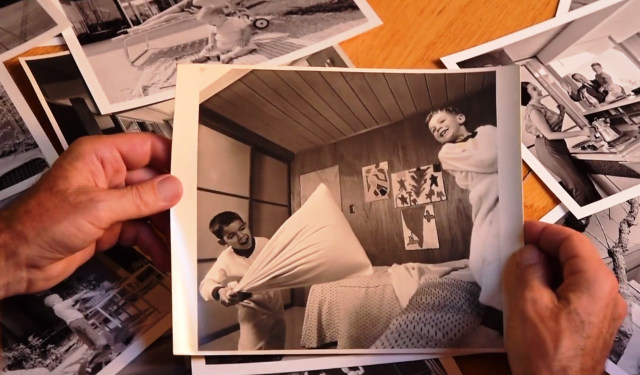 |
|
|
That said, there is much to enjoy in the film, and it will be eye-opening to what is surely its prime target market – the Netherlands and neighboring countries in the EU. Shots of Edwin cruising in his car along the highways and past the hillsides of Marin County will surely seem exotic and so very California.
“The film has been bought by Cultura.nl, aka Dutch Public Broadcasting, and will show on TV at the end of October,” Wiering says.
The film takes the viewer into places that are otherwise relatively inaccessible, including Frank Lloyd Wright’s Bazett house, where Joe lived during World War II and had his ah-ha moment about building modern homes.
The author of this blog leads a tour through the all-steel X-100 Eichler in the San Mateo Highlands.
There is also a lively interview with Dee Tolles, who was not only a close friend of Joe’s in his later years, but served as his banker, financing hundreds of houses. He describes how he met Joe Eichler when buying one of his houses, being told that Joe “has a voice that’s about four octaves below a whale’s.”
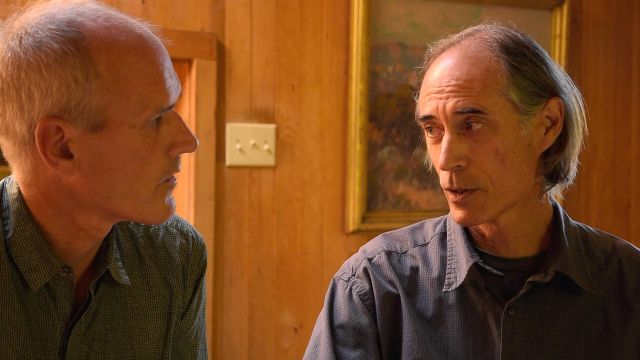 |
|
|
But even Tolles’ narrative raises doubts, and illustrates the problem that afflicts film documentarians. By relying primarily (or entirely) on recollections by talking heads about events that took place decades ago, they can report false facts.
Tolles, for example, says that when buying an Eichler home he was required first to meet Joe Eichler.
"You can't just buy an Eichler house. You have to meet Mr. Eichler," Tolles says he was told by the sales person, who added, "You have to go down and have an interview."
This suggests Eichler wanted to meet all new buyers of his homes, an unlikely scenario. Is it likely Joe would have done anything to delay or potentially kill a sale? No. This story is pure myth. Maybe Tolles did meet Eichler during the sales process. But meeting Joe was certainly not a requirement before buying.
In fact, Joe was deeply focused on moving merchandise.
Here’s what Jerry Grantz, who sold homes and did marketing for Eichler, told us recently, a story other sales people have told as well: “And remember, every Sunday, every Sunday, Joe Eichler would call every subdivision. The phone would ring. 'What’s up?', was all you got, and man, everybody was so crazy scared at 5:30.”
The film oversimplifies the Eichler story in other ways, for example in not looking at the architectural and development context in which Joe and his company worked. It does not focus on the various architects who designed the homes, for one thing.
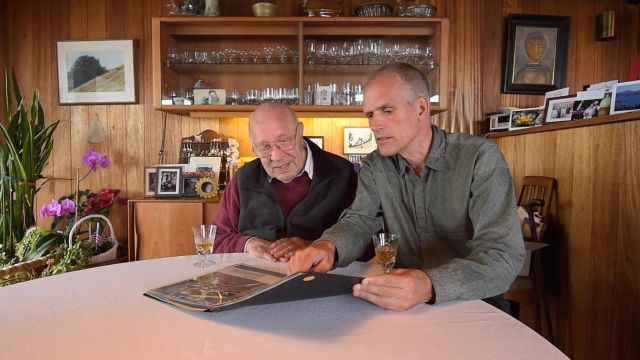 |
|
|
It also doesn’t talk about the way Eichler homes fit into the larger context of modern residential design in California in the postwar years, or focus on other developers who dipped their toes into building modern homes.
That is a failing, because what is so important about Eichler is not that he built modern homes, but that he built only modern homes, and then continued to explore how to make them better with new design after new design for more than two decades. All of this contrasts with the hesitant way most other developers approached modern homes, often mixing them with more traditional models and softening their modern attributes in the interest of attracting a wider set of buyers.
The film also oversimplifies, by focusing on the Summit highrise in San Francisco as leading to Eichler Homes’ downfall. In fact, the Summit was just one of several such urban projects that contributed to the financial woes that killed the firm.
More annoying is quoting the late and esteemed architect Dan Liebermann, who worked on some Eichler homes when in the office of architect Aaron Green. Liebermann tells us that Frank Lloyd Wright turned down an offer to design tract homes for Joe – thus forcing Joe to hire his original home designers, Anshen and Allen, instead.
Let's not forget that one of Wright's ambitions was to build entire communities of compact 'Usonian' homes, which he might have been able to do working with Eichler. Wright would have jumped on the chance to develop suburban neighborhoods.
And, by all accounts, Wright did not turn down good jobs.
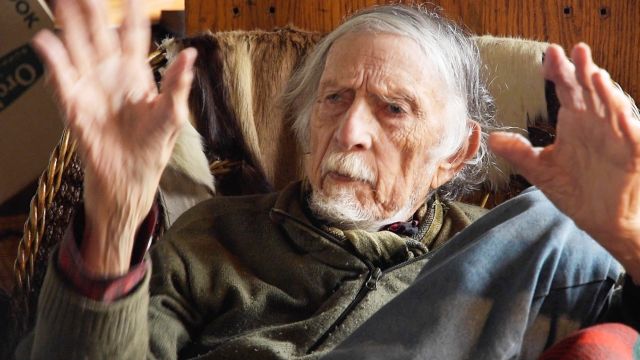 |
|
|
Dan Liebermann's story that Eichler offered the design job to Wright is another myth. In fact, it is not a story that was ever told by Joe's son Ned, who worked in the firm.
The filmmakers do not ask Liebermann for the source of his knowledge.
In all likelihood Eichler never tried to hire Wright because he didn't think he could afford him.
According to Ned Eichler, his father was so concerned about the cost of hiring architects to design his homes that at first he didn't even think he could afford Anshen and Allen; Anshen had to convince him.
Still, the film contains great bits, including this tale from former Eichler salesman Jim Dougherty, who, while driving in a car with Joe, passed by a newly sold Eichler home whose owner had just given it stone siding.
“You’ve ruined it!” Joe exclaimed, telling the owner, “I’ll buy the house back from you if you want to sell it.”
No sale.
- ‹ previous
- 677 of 677



